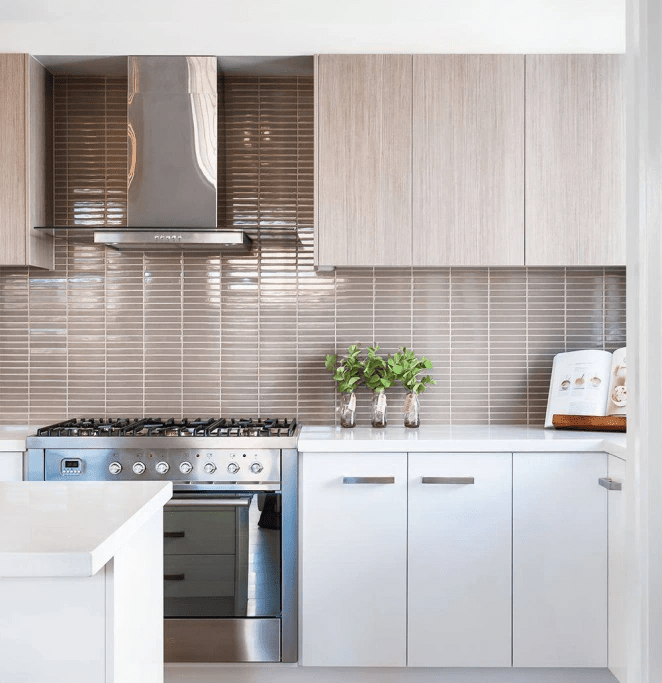Are you curious about maintaining your newly refaced cabinets right after your kitchen cabinet renovation? This blog post will provide you the required information to keep your kitchen cabinets in prime condition for many years.
I.Early Care for Your Newly Refaced Cabinets
Cabinet refacing is an increasingly popular alternative for kitchen renovations, offering a cost-effective way to update your kitchen’s appearance without attempting a complete overhaul. It focusses on renewing the exterior appearance only while retaining its existing structure. Here are the tips to preserve the aesthetics and durability of your newly refaced cabinets.
Cleaning Your Refaced Cabinets
First, start cleaning your cabinets to eliminate dust and deposits left behind during the refacing procedure. Use a mild cleaner suitable for your cabinet material, be it laminate, wood or another surface. Abrasive or harsh chemical cleaners are a strict ‘No’ as it could damage the finish.
Check Thoroughly
It’s imperative to check your newly refaced cabinets thoroughly. Can you notice any imperfections, like dents, scratches, or uneven layers, that may have happened during the refacing process. It’s vital to solve any issues swiftly to ensure your cabinets uphold their impeccable look.
Determining a Maintenance Routine
Determine a regular maintenance routine to help keep your cabinets look pristine. It may involve daily cleaning of splatters and spills, followed by weekly dusting routine, and deep cleaning sessions as a monthly chore. Thus, your regular cleaning routine can help avert grime and dirt from accruing and extend the life of your cabinets.
Preventing Excessive Moisture
Although your cabinets are made to endure everyday use, extreme presence of moisture can still pose a risk to their durability. Any splashes from your dishwasher or sink should be swiftly wiped away to protect from water damage. Furthermore, ensure adequate ventilation in your kitchen to reduce moisture accrual.
Handle with Care
Use your refaced cabinets with care to prevent needless damage. Be careful while opening or closing your cabinet doors and drawers, and avoid slamming them to prevent dents or scratches. Be aware of the weight of stored items inside cabinets, and never overload shelves, as it can cause damage to hinges.
II. Routine Maintenance Tips for Refaced Cabinets
Preserving the elegance and practicality of your refaced cabinets isn’t a complex task. You can keep your cabinets looking like new for many years by including some simple maintenance tips into your routine.
Regular Cleaning
Regular cleaning is vital to keep your cabinet surfaces free from dust, dirt, and fingerprint accruals.
Tackling Stains and Spills
It’s imperative to quickly tackle stains and spills to stop them from settling into the cabinet surfaces.
Hardware Care
Inspect hardware, such as hinges and handles regularly, for any signs of wear or looseness. Secure any loose bolts or screws as required to ensure that the hardware remains secure and works properly.
Preventative Measures
Preventative measures can also help in extending the life of your refaced cabinets. You can use cabinet liners or mats to safeguard your shelves and cabinet drawers from spills, scratches, and other damage.
III. Long-Term Care Tactics for Refaced Cabinets
Preserving the exquisiteness and functionality of your refaced cabinets demand long-term care tactic.
Avoid Stress on Materials
Minimising the stress placed on cabinet materials is vital to reduce long-term deterioration. For instance, soft-close hinges and drawer glides can avert slamming, which can reduce stress on the hinges and thereby extend their lifespan. Also, you can use cabinet door bumpers to cushion the impact of closing doors, which can help protect their integrity.
Any Signs of Damage Should Be Promptly Addressed
Regular inspections help you to detect signs of damage or wear in its early stages. Look for chips, cracks, peeling, or thinning finishes, and ensure correct alignment of cabinet doors and drawers. Fine-tune drawer glides or hinges as required to uphold functionality and avert further problems.
Safeguarding the Surface
Shielding cabinet surfaces from dents, scratches, and heat damage is paramount for longevity. Use of placemats, coasters, or cutting boards help prevent damage from daily use. Refrain from putting hot pans or pots directly on to the cabinet surfaces, and consider applying a protective coating or sealant to increase durability and resistance to stains, scratches, and moisture.
Professional Maintenance
Scheduling periodic inspections and maintenance by professionals will enable in-depth assessment and timely repairs. Professionals can provide expert advice on care and suggest required touch-ups. Occasional professional cleaning and maintenance services can help keep cabinets looking pristine, prolonging their lifespan.

